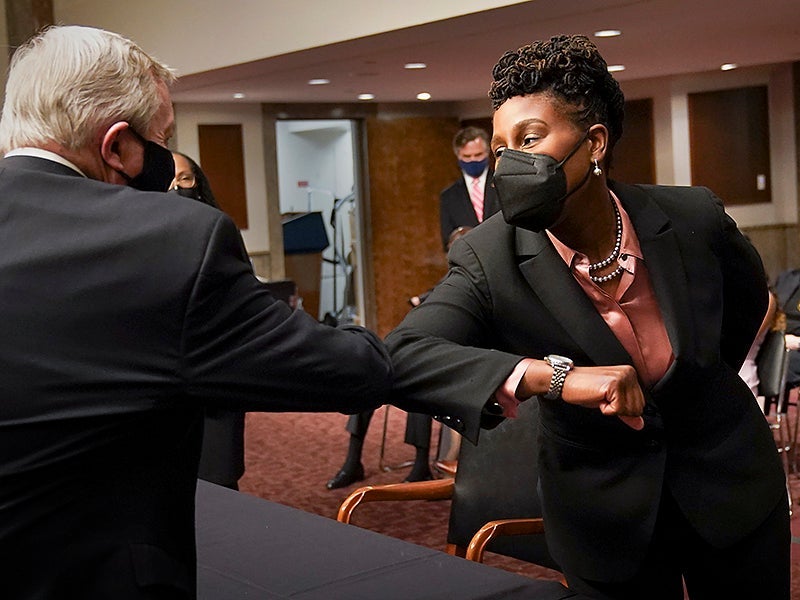Earthjustice goes to court for our planet.
We’re here because the earth needs a good lawyer.
New Judges Are Changing the Federal Bench For the Better
This page was published 3 years ago. Find the latest on Earthjustice’s work.
Although the Supreme Court commands much public attention, only a very small number of cases ever make it to the highest court. More than 99% of federal cases are resolved in the lower courts: the federal district courts and the circuit courts of appeal.
The lower courts are an important forum for our strongest environmental laws. Though state courts and public utility commissions are also significant venues for Earthjustice’s litigation, the lower courts are where many of our cases are heard. The quality of judges who sit on these courts matters, since they issue decisions that affect all people living in the United States – yet the judges on the federal bench have never reflected the demographics of the public they serve. Historically, the circuit courts have been made up of over 80% white people and 70% men.
But there is good news: This is changing. Over the last two and half years, the Senate has confirmed 140 federal judges nominated by President Biden – an incredible pace surpassing that of recent presidents. With the Democrats retaining a Senate majority, the Biden administration can build on its progress toward diversifying the federal courts, especially the lower courts.
Wait, how does the federal court system work again?
- Many environmental lawsuits are heard in federal courts. Earthjustice uses federal laws like the Clean Water Act and the Clean Air Act to protect the environment.
- Cases are initially tried in district courts.
- After a judge has made a ruling, a case can then be appealed to a circuit court.
- From there, cases can be appealed to the Supreme Court; but unlike circuit courts, the Supreme Court is not required to hear every case submitted to it. In the 2022-2023 term, the Supreme Court agreed to hear only 60 cases.
- It matters which judges serve on the lower courts because most cases are resolved there.
How President Trump changed the courts
- Trump had an unprecedented opportunity to stack the federal courts with judges whose ideology matched his – and he took advantage of it.
- In the last two years of Obama’s presidential term, then-Senate majority leader Mitch McConnell blocked many of Obama’s federal court nominees, leaving more than 100 federal judicial seats open.
- When Trump entered the White House, McConnell lifted the block and confirmed more than 220 federal judges. In just four years, Trump managed to appoint nearly as many circuit court judges as Obama did in eight. Most of these Trump-era judges were hostile to environmental regulation and public interest litigation.
- Since then, the circuit and district courts have made decisions that negatively impact people’s most critical rights, including the rights to clean air and clean water, to vote, and to be treated as equal before the law.
The good news
- Since coming into office, the Senate has confirmed 140 federal judges nominated by President Biden.
- These judges are more culturally diverse than at any time in U.S. history: approximately two-thirds of Biden’s confirmed judges are women and two-thirds are people of color.
- They are also the most professionally diverse in history, with backgrounds as public defenders (representing people in court who cannot afford a private lawyer) and civil rights lawyers. These work histories bring experience viewing cases through the eyes of those marginalized in our society.
- Environmentally, only a handful of federal judges have had experience defending environmental statutes. President Biden has nominated four so far, including Rachel Bloomekatz, who is the first public interest environmental lawyer ever to become a federal judge.
- Diversity on the federal bench is critical for making more fair-minded decisions. A more diverse judiciary brings different perspectives that more accurately reflect the litigants before them – not just the political or economic elite.
Control of the Senate makes a crucial difference to our courts
- Federal judges are confirmed by the U.S. Senate. And as Mitch McConnell’s infamous blocking of Obama nominees shows, senators wield outsize influence in shaping the political leanings of the nation’s courts.
- There’s hope for a better future in the rebalancing of the courts that is taking place now. But some decisions from sitting judges have been out of line with precedent and have done real damage by undermining civil rights.
- In addition to protecting the right to vote and other critical civil rights, the courts must also enforce the environmental laws that Americans rely on to protect them from climate change, pervasive environmental injustice, and threats to public lands, clean air, and clean water.
- Those laws are only as strong as the judges who uphold them, so we need fair-minded judges who decide cases based on facts, science, and the real-world application of their decisions to all members of society.
